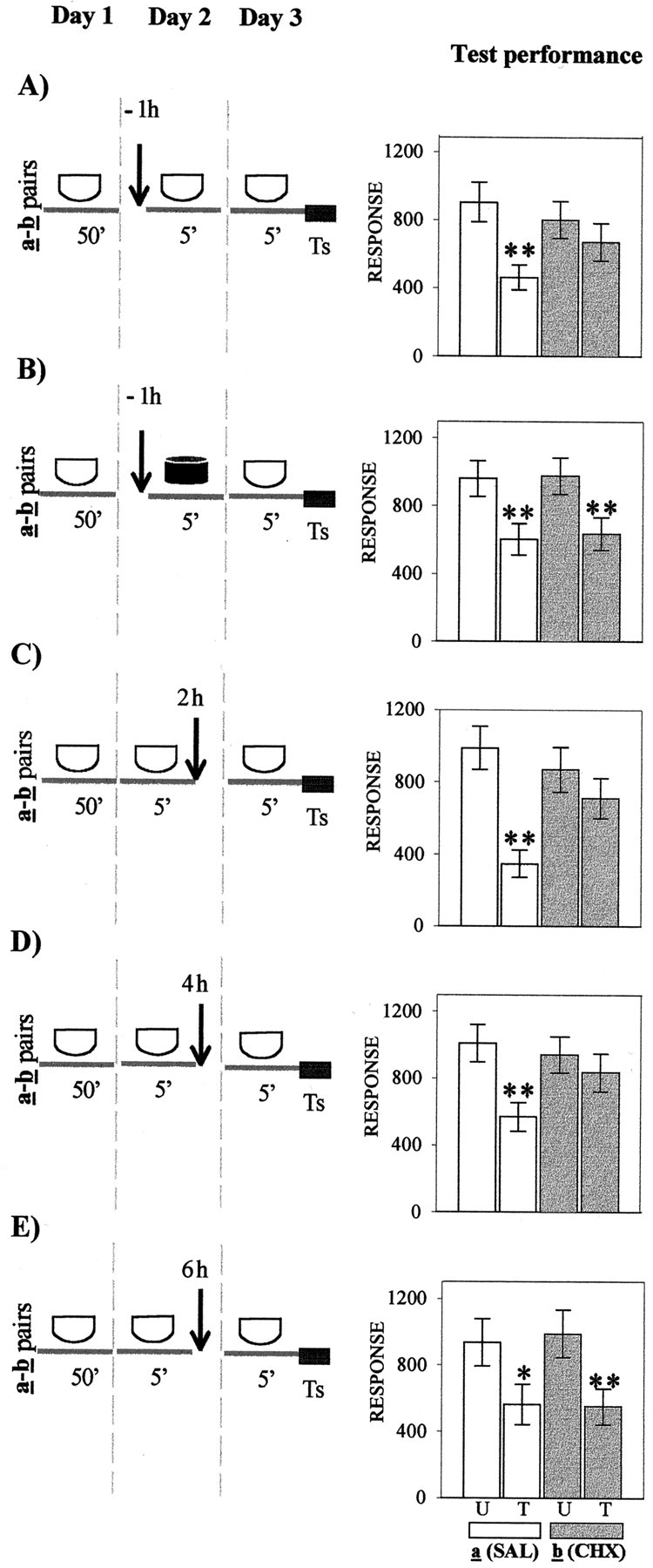Fig. 1.

Effect of CHX administered at diverse times relative to re-exposure to the original learning context.Left, Behavioral protocols. Icons stand for the crabs that remained in a container during the time interval indicated below the icon; white icon, standard context; black icon, different context.Arrow, An injection of 50 μl of physiological solution (SAL) or an injection of 50 μl of CHX (15 μg per crab). Day 1, Training session in the standard context for 50 min; U–T pair a or b in each experiment has a trained group (T) with 15 trials separated by 3 min and an untrained group (U) without training. Day 2, Treatment session, in which U–T pair a of each experiment is injected with SAL and U–T pair b is injected with CHX; injections indicated by an arrow were given 1 hr (−1h) before re-exposure to the standard context (A) or 1 hr (−1h) before exposure to the different context (B); alternatively, injections indicated by an arrow were given at 2 hr (2h) after re-exposure (C), 4 hr (4h) after re-exposure (D), or 6 hr (6h) after re-exposure (E). Day 3, Testing session; all groups stay for 5 min in the standard context followed by test trial (Ts). Right, Test trial on day 3. Ordinate, Response (i.e., average of the escape response scores for the test trial ± SEM). Open bars, Groups of U–T pair a (SAL-injected);gray bars, groups of U–T pair b(CHX-injected). Planned comparisons: *p < 0.05, significant T < U difference; **p < 0.01, significant T < U difference (both memory retention).
